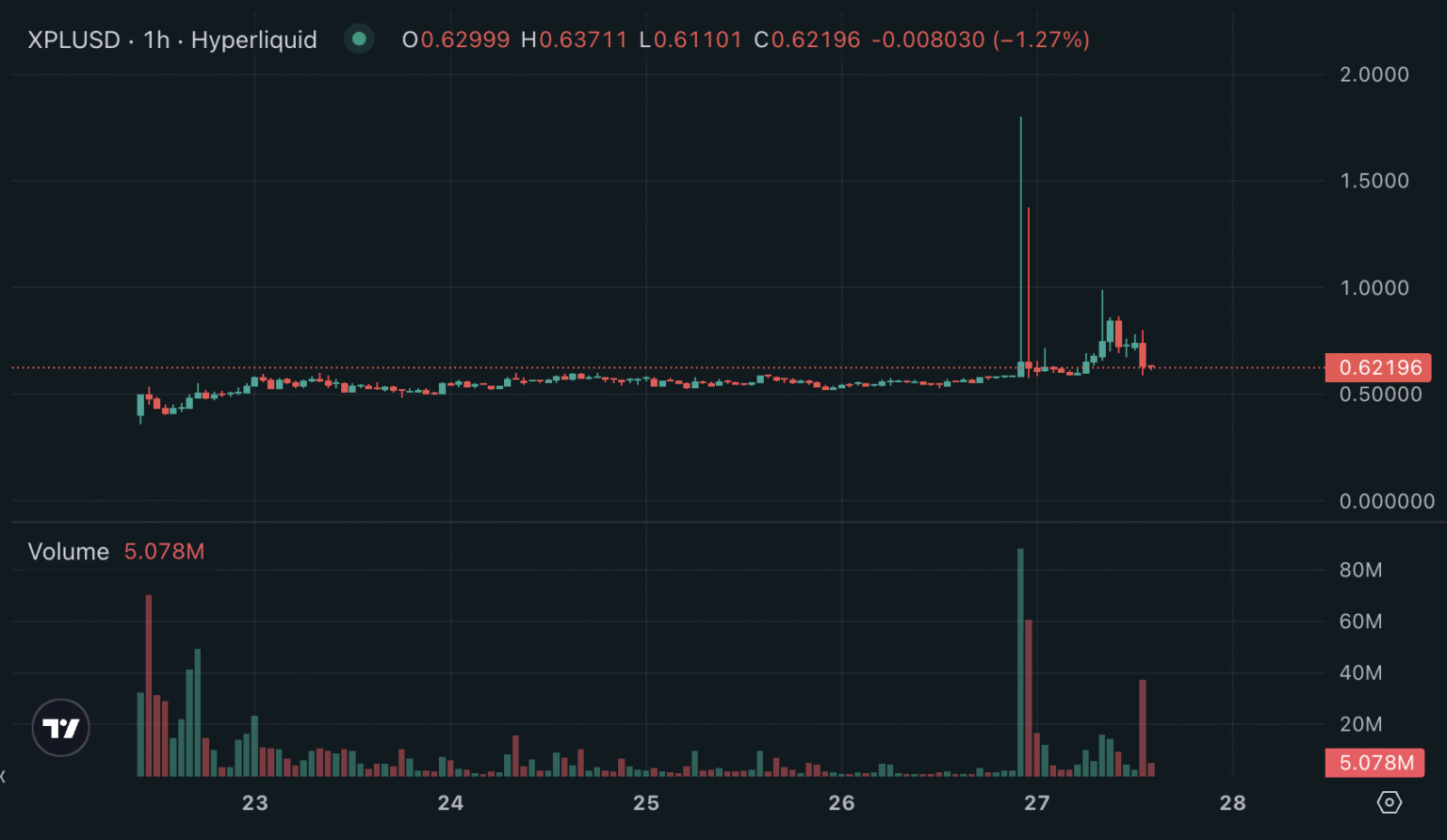Understanding the Hyperliquid Incident: Price Surge and Safeguards
In a dramatic turn of events, Hyperliquid’s pre-launch XPL perpetual market experienced a staggering 2.5x price spike, prompting urgent updates to its protocol-level safeguards. This unforeseen surge led to a wave of liquidations, as whale activity effectively swept the entire order book, resulting in over $17 million in wiped-out positions, primarily from short trades. Analysts pointed out that four major addresses executed a successful short squeeze on Hyperliquid, reaping cumulative profits exceeding $46 million. The incident highlights the volatility and risks involved in trading pre-launch tokens.
As it stands, Plasma’s forthcoming XPL token is already trading on various pre-listing platforms, including Hyperliquid and Binance’s pre-market offerings. During the chaotic activity late Tuesday, Hyperliquid’s XPL/USD perpetual contract skyrocketed to nearly $1.80 before correcting itself, and later experienced another notable spike near $1. In contrast, on Binance, the XPL/USD market peaked at just $0.55. Plasma itself has garnered substantial backing, raising around $373 million during a highly oversubscribed public sale in July, positioning it as a major player in the Layer 1, stablecoin-focused market sector.
Despite the turmoil, Hyperliquid reassured users through its official Telegram that its liquidation systems functioned properly and without technical issues. The platform executed liquidations against the order book before reverting to auto-deleveraging—a safety mechanism engaged when positions cannot be liquidated due to insufficient margin. Hyperliquid emphasizes that its "hyperps" feature isolated margin, ensuring that profit and loss from XPL positions remain distinct from other assets, meaning only the XPL market was affected without incurring bad debt. This capacity for rapid adjustment aims to preserve user trust and confidence in a volatile trading environment.
The incident serves to remind users of the inherent unpredictability of pre-launch markets, prompting mixed reactions. While some critics cautioned that such anomalies could undermine confidence in Hyperliquid’s pre-market model, others defended the platform’s adherence to established rules and operational integrity. The Hyperliquid team emphasized the importance of understanding the varied risk profiles of permissionless protocols, advising users to engage with their documentation thoroughly and employ solid risk management practices before trading these markets.
In response to user feedback and the extraordinary events, Hyperliquid is implementing two primary updates in its upcoming network upgrade. One critical change is a new hard cap that will restrict hyperp mark prices to 10 times the 8-hour exponential moving average. This adjustment aims to establish clearer risk boundaries for overcollateralized shorts and promote liquidity during periods of heightened volatility. The Hyperliquid team noted that while this measure would not have altered the liquidations from the recent incident, it intends to foster a more stable trading environment.
The second significant update involves incorporating external perpetual market data—where available—into the mark price formula for hyperps. By leveraging data from established markets like Binance’s XPL offerings, Hyperliquid plans to enhance the robustness of price signals in thinly traded markets. Their previous framework avoided reliance on external spot or index oracles, promoting reduced manipulation risks commonly associated with pre-launch futures trading. As a result of these improvements, Hyperliquid’s native cryptocurrency has also seen a positive response, increasing by more than 10% in value and reaching an all-time high of approximately $51.
As we look toward the future, it’s clear that the Hyperliquid incident illustrates not only the volatility present in permissionless trading but also the proactive measures being taken by protocols to adapt to user feedback and market conditions. As new methods are integrated to mitigate risks, traders must remain vigilant about market dynamics and apply prudent risk management strategies. With the ongoing evolution of blockchain technology and trading, both traders and platforms will need to navigate the landscape with an informed perspective to harness opportunities while managing risks effectively.


